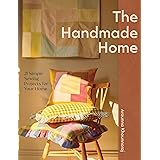Have you ever walked into a home that, despite being impeccably clean and stylish, just felt… cold? Or, conversely, stepped into a space with minimal fuss that immediately enveloped you in a sense of warmth and comfort? The distinction often lies not in the décor trends of the moment, but in the subtle yet powerful application of design psychology. While the video above offers a fantastic architect-approved introduction to creating a truly cozy home, understanding the deeper principles can elevate your approach beyond mere aesthetics.
Creating a truly cozy home goes beyond simply adding blankets or lighting candles; it involves tapping into inherent human psychological responses to our environment. As highlighted in the video, these aren’t just superficial design choices, but rather time-tested strategies rooted in our evolutionary and cultural experiences. Let’s delve further into the expert insights and expand upon these foundational elements, offering actionable strategies to transform your living spaces into havens of comfort.
The Luminous Embrace: Harnessing Warm Light for a Cozy Home
The impact of light on human psychology is profound, shaping our moods, energy levels, and perceptions of comfort. Our evolutionary history ties us to the sun’s cycle, particularly the warm, golden hues of sunset signaling relaxation and rest. This deep-seated connection is precisely why the video emphasizes avoiding stark white light bulbs in favor of warmer tones.
Specifically, the 2700 to 3000 Kelvin (K) range of yellow light is crucial for fostering a cozy environment. Light within this spectrum mimics the incandescent glow of traditional bulbs and, more importantly, the warm light sources our ancestors relied on, such as fire. Conversely, cooler light temperatures (above 4000K), often found in office settings or some modern LED installations, can feel sterile and clinical. A 2010 study published in the *Journal of Environmental Psychology* indicated that warm color temperatures are associated with greater comfort and relaxation, especially in residential settings. Investing in smart bulbs that allow for adjustable Kelvin temperatures is a practical strategy, enabling you to shift the ambiance from bright daylight simulation to a soft, warm evening glow with ease.
The Palette of Comfort: Earthy Tones and Their Psychological Resonance
Color is a silent language in design, capable of eliciting strong emotional responses. The video aptly contrasts the welcoming feel of earthy tones with the often sterile impression of bright whites and grays. This sentiment echoes the wisdom of architectural theorists like Christopher Alexander, who in his seminal work, *A Pattern Language*, dedicates an entire chapter to “Warm Colors,” noting that “the greens and grays of hospital and office corridors are depressing and cold” while “natural wood, sunlight, bright colors are warm.”
Warm, earthy tones such as deep terracotta, rich olive green, spiced ochre, and various shades of brown inherently connect us to nature and provide a sense of grounding. These colors have lower psychological arousal rates compared to vibrant, highly saturated hues, promoting tranquility rather than stimulation. When light interacts with these surfaces, as the video underscores, it produces a cumulative warm, yellowish glow that permeates the entire space. This subtle tint then affects how every element within the room is perceived—from the furniture to the faces of loved ones—contributing significantly to an overall sense of comfort and well-being. Incorporating these tones through paint, upholstery, or even larger architectural elements like exposed brick or timber, cultivates a visually soft and embracing atmosphere.
Biophilia in Action: The Allure of Authentic Natural Materials
Our innate connection to the natural world, a concept known as biophilia, plays a powerful role in how we perceive and respond to our environments. The video points out that surrounding ourselves with natural materials intuitively makes us feel more at ease, relaxed, and ultimately, cozier. This isn’t just a subjective feeling; research in environmental psychology supports the positive impact of biophilic design on human well-being, including reduced stress and improved cognitive function.
Authentic materials like real wood, stone, marble, cork, and natural fibers such as wool, linen, and cotton introduce both visual and tactile warmth into a space. A solid oak table, for instance, not only brings the organic beauty of wood but also offers a tangible sense of history and permanence. The subtle imperfections and varied textures found in natural elements prevent visual monotony, engaging our senses in a calming, non-demanding way. Beyond large furniture pieces, integrating smaller items like woven jute rugs, terracotta planters, or even simple cork coasters can subtly enhance the biophilic connection within your home, fostering a deeper sense of tranquility and warmth.
Weaving a Narrative: The Indispensable Role of Texture
In the pursuit of minimalist aesthetics, many modern homes inadvertently strip away a crucial element of coziness: texture. As the video explains, a lack of varied textures can lead to “visual silence”—a flatness that not only bores the eye but can also be cognitively tiring. Our brains crave sensory engagement, and texture provides this in a rich yet understated manner, much like the varied surfaces we encounter in nature.
To combat this visual monotony and inject warmth, a multi-layered approach to texture is essential. Beyond plush velvet cushions and thick wool rugs, consider textured wallpapers, wood paneling, or wall moldings that add architectural depth. Materials like lime wash, which the video highlights, offer not only soothing colors but also a subtle, chalky texture that diffuses light and adds softness to walls. Incorporating objects with unique surface qualities—such as hand-thrown pottery, brushed metal accents, or even textured glassware—provides visual and tactile interest. This deliberate layering of disparate materials creates a rich, inviting tapestry that encourages the eye to linger and the body to relax, transforming a flat space into one of tactile comfort.
The Dance of Light and Shadow: Crafting Dynamic Illumination
Uniform, overhead lighting, often characterized by a single bright ceiling fixture, can flatten a room and make it feel lifeless and uninviting. The video powerfully illustrates this contrast, advocating for uneven lighting that creates an interplay of light and shadow—a phenomenon frequently observed in nature, such as dappled sunlight filtering through trees. This dynamic quality of light is crucial for creating depth, interest, and ultimately, a more engaging and cozy environment.
To achieve this, a layered lighting strategy is paramount, combining ambient, task, and accent lighting from various sources. Instead of relying solely on a “big light,” strategically placed floor lamps, table lamps, and wall sconces can create intimate pools of light, casting soft shadows that lend a sense of depth and mystery. The primal comfort derived from flickering firelight is another potent element; if a fireplace isn’t feasible, grouped candles or even bioethanol fireplaces can mimic this effect. Crucially, installing dimmers on all light fixtures allows for precise control over intensity, enabling you to adjust the luminosity to suit the mood and time of day, transforming a brightly lit space into a serene, dimly lit sanctuary.
The Comfort of Containment: Creating Psychological Enclosures
The way furniture is arranged can profoundly impact our sense of comfort and security within a space. Open-plan living, while offering flexibility, can sometimes leave occupants feeling exposed and uneasy. The video introduces the concept of creating “enclosures” or defined pockets of space, drawing parallels to the natural shelter provided by a tree. This instinctual need for boundaries and refuge is deeply rooted in human psychology, contributing to a sense of safety and relaxation.
Strategically arranging furniture to create intimate zones—such as tucking a sofa into a corner with a side table and a lamp, or defining a dining area with a pendant light overhead—can provide these essential psychological boundaries. Architectural elements like built-in shelving, room dividers, or even a canopy over a bed can enhance this feeling of containment. This approach doesn’t mean sacrificing openness entirely; rather, it involves thoughtful spatial planning that balances expansive views with comforting, well-defined areas. By creating these ‘shelters’ within your home, you’re not just arranging furniture; you’re catering to a fundamental human need for protection and comfort, making each space feel more intimate and secure.
The Soothing Symphony of Curves: Organic Shapes in Design
Our brains interpret shapes in powerful ways, associating angular, sharp forms with potential danger (think jagged rocks or thorns) and soft, rounded contours with safety and comfort. The video succinctly captures this, noting that while sharp lines can stimulate, curves are inherently relaxing. This phenomenon is supported by studies in environmental psychology, which suggest that exposure to curvilinear forms can reduce stress and promote feelings of calm, a concept sometimes referred to as ‘biomorphic design.’
Incorporating curves and organic shapes into your home design can significantly contribute to an overall sense of tranquility. This might involve choosing rounded furniture—a circular dining table, a sofa with soft, curvilinear arms, or an oval coffee table. Beyond furniture, consider circular decor items like round mirrors, abstract artwork with flowing lines, or organic-shaped vases and sculptures. Even architectural details, such as arched doorways or softly curved wall niches, can soften the perceived edges of a room. By favoring these gentle, flowing forms over rigid, angular ones, you create an environment that subtly communicates safety and softness, aligning with our primal preference for smooth, non-threatening contours found abundantly in nature.











